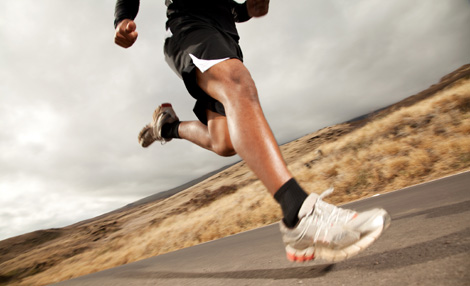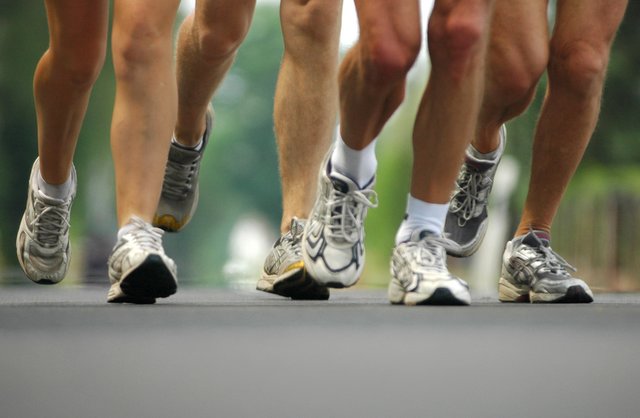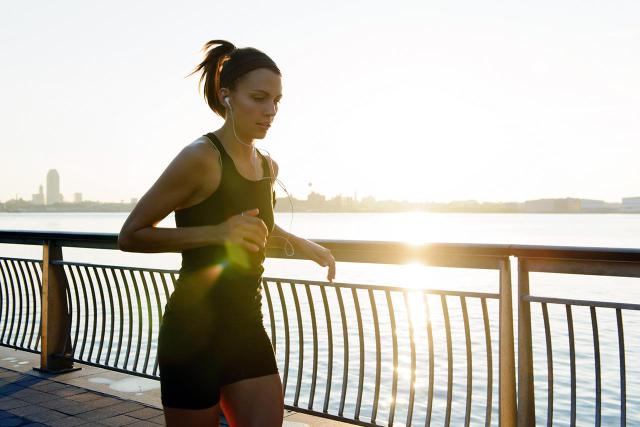Written by Mark Allen, ITU Olympic Distance World Champion and 6-Time Hawaii IRONMAN World Champion
Human beings are the best endurance runners on the planet! We are designed to run better than any animal over long distances. That’s why we have an Achilles tendon. That’s why we have enough fat stores in our bodies to cover about 500 miles if we could access all of it, but only enough carbohydrate to go 20-miles at best.
But there are two types of running. One is how we run when we grow up wearing shoes and sitting in front of a computer all day. The other is how we would run if we grew up walking barefoot, squatting to sit, carrying loads on our backs or head, and having to track prey over great distances for food rather than go to a store to get dinner. The first will never make the fastest runner. The second, even if simulated in our modern world, will transform you into an endurance runner with elite characteristics!
There are five things we can measure in running that are intimately linked to this quest of running the right way. Each is a marker that if improved on will affect all of the other four markers. None is more important than the next. But if worked on together will enable you to move like the most graceful marathoners in the world! Are you ready for them? Here they are:
Braking. This is the biggest issue that modern world runners are doing incorrectly. It is how your foot first comes into contact with the ground. With shoes, the way we end up doing this is to hit the ground with our heel first. From there we roll onto the midfoot and then eventually either through brute force or with momentum, get our center of gravity out in front of our midfoot and are then able to push off and continue on.
Landing with the heel first is like putting on the brakes. Our center of gravity is behind the midfoot. It takes force or energy to get the bulk of our body then up over the midfoot and eventually past it to be able to toe off and keep going.
Think of it this way, is there any way to push forward in your running stride from your heel? Absolutely not! It only takes place when the bulk of your body, your center of gravity, is in front of your midfoot. Any amount of time spent in contact with the ground behind your midfoot is a loss of efficiency and is in reality putting on the brakes rather than accelerating you forward.
This never happened to our ancestors who ran without any kind of foot covering. The good news is that you can learn how to run with a midfoot strike very easily! Here’s how: Go to a track or grassy area that is lengthy. Take off your shoes and socks. Run for a few minutes barefoot. Do you see how you are landing? I guarantee you that you will not land on your heel! You will naturally and immediately run the right way. You will land on your midfoot. You will also run lighter on your feet, which is something that I will address later when I talk about bounce. But for the moment, just become aware of how you are running when you land on the midfoot.
Now put on your shoes and try to recreate that same feeling. You can do this drill daily or a few times a week until you are able to translate the midfoot barefoot strike into how you run with your shoes on. This is a key piece in learning to run the right way.

Pelvic Drop. This is intimately related to braking in one specific area, and that is from how we operate by wearing shoes. Our ancestors had to develop the ability to stabilize their foot plant when running without the aid of a shoe to help them. When your foot comes in contact with the ground it cannot accept the full weight of your body if the muscles in your feet are not able to create a stable platform. Another way to think about this is if it takes a few milliseconds to become stable from your foot upward through the trunk of your body when your foot hits the ground, there is going to have to be another area of your body that holds the impact until it does. Your body can’t just collapse until your feet muscles create that platform. And guess where that happens? Yes, in the pelvis.
Without shoes, our feet get really good at developing the small muscles and the neural pathways that get that platform to happen upon contact of the foot with the ground. But with shoes, our feet don’t develop the same ability to sense the ground nor are they ever required to work the very small muscles that are necessary to create that platform. The result is that when our feet come into contact with the ground, there is a lag time before the foot is stable enough to support the weight of the body. In that small but significant interim, the downward force of our body weight is managed and slowed by the pelvis dropping, kind of like a spring taking the load rather than a stable platform handling it.
To run the right way, we need to train our feet to do their job the way our ancestors’ feet did. Here is a simple drill that will help you to do that.
Take off your shoes and socks. Stand on one foot with your arms relaxed at your side and the leg you are standing on straight. Are you stable? Okay, now for the drill, close your eyes! You will likely find that you are immediately starting to wobble wildly! You will also notice that you are starting to feel fatigue in muscles in your feet and ankle that you never knew you had. These are your ancient running muscles that never get worked with the support of shoes. Stick with it until you get stable or until you just can’t take it anymore. Now switch to the other leg and do the same thing.
You can go back and forth between legs a number of times until you start to feel more stable. Again this is with your eyes closed. This is teaching your feet to be stable in the first part of the stride, which is when your foot actually comes in contact with the ground.
Now for the second part of this drill. Once you are stable on one leg, lower yourself just slightly by bending your knee and lowering yourself a few inches. Get stable in that bent leg position. Work both legs, first one side then the other. If you notice one knee is fine, but the other wobbles when you bend your leg slightly, this is usually the knee that you also find gets sore when you run. It has to do with training this neural pathway and once you can do this drill, you will likely find that your knee pain goes away.
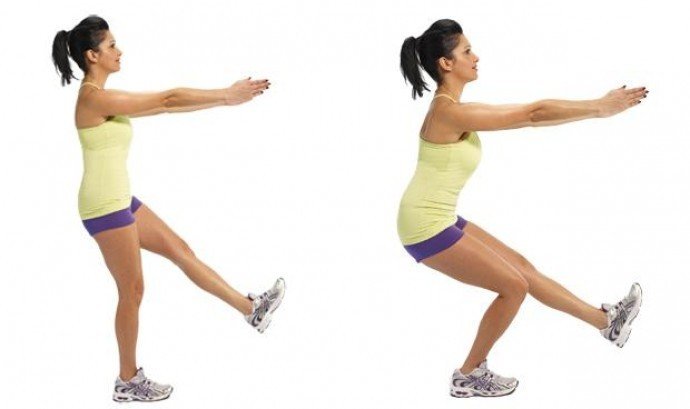
This part of the drill is helping to train your feet to be stable enough to accept the full load of your body weight. It is also the piece that will help you reduce the majority of any pelvic drop that happens when you run.
Now for the final part of the drill. Once you are stable in the bent leg position, again with your eyes closed, straighten your leg back to full extension and get stable. This as with the first two parts is done with your eyes closed. Do this standing on one leg then on the other as in the first two parts as well.
This trains your feet to be stable in the push off part of your stride. All three pieces (getting stable upon contact with the ground, accepting your body’s weight, then pushing off with a stable force) are essential for having a stable pelvis and not having it drop as a compensation for instability in your feet functioning below.
You can also do core strength workouts to help stabilize the pelvis and those should be done! But ultimately, if your feet are stabilized and creating a solid platform to accept your body’s weight, then to push from, your pelvis will remain stable as well since it is not being called upon to be a weight bearing mechanism in your running. This is running the right way.
Cadence. When someone is landing on their midfoot and when their feet are creating a stable platform to accept the body’s weight, cadence rate goes up, and that is running the Right Way. When we deaden the sensation between the foot and the ground, heel striking takes place, pelvic drop starts to occur because you cannot immediately support your body weight on a spongy platform (shoe) that lands on the heel. And with all of that the rate at which you get on and off your foot slows dramatically.
An ideal elite cadence rate is about 180 foot strikes per minute (90 per side). If you are on stable terrain this is a target to try to see if you can approach. If you are significantly lower than that, you are likely braking and have pelvic drop. Both braking and pelvic drop will go away if you can increase your cadence rate.
This is one of the beauties of proper running form, if you can increase your cadence rate from say 150 foot strikes per minute (which I can guarantee you if you video taped yourself you would see this) up to 180 foot strikes per minute, you would see both braking disappear as well as a minimization of pelvic drop.
To increase cadence, you can do the drills above and both will help. You can also engage your arms. Your body will follow what your arms are doing. So if you are targeting an increase in cadence rate, increase the back and forth rate of your arm swing. This will require reducing the range of the swing and will also work to correct another of the five elements of running the right way that I’ll talk about in a moment, which is rotation. But a primer on that, if you reduce the amount of rotation, you are able to increase your cadence rate. It’s all about getting every motion in your body to propel you forward.
Bounce. If you have a lot of up and down motion off of each foot strike and push off, efficiency drops significantly and huge amounts of energy are used that need not be.
When we come in contact with the ground and then accept the load of our body via a knee bend, the achilles tendon is stretched. This tendon then returns that energy in the push off free of charge! That is what makes us the greatest endurance running animals on the planet. We are built for efficiency via our achilles, and a few other adaptations. But that efficiency is only maximized if its recoil is used to drive us forward rather than upward. Upward is not the most efficient use of the achilles, and it requires a lot of muscular energy other areas like from the calf muscles, glutes, and even quads. Forward propulsion is almost free of charge if we reduce our vertical component in the running stride. That takes place from the force stored in the stretched achilles as well as from utilizing gravity to pull us forward.
A positive direction in your cadence rate will reduce bounce. A focus on your arms helping you drive forward will reduce the inefficiency of bounce. Visualizing your head being stable and all rotation going on below your neck will help reduce bounce. Having the image of you moving forward over ground rather than pushing off it to generate speed will reduce bounce. Visualizing your upper sternum moving up and forward of your body will help reduce your bounce. It is the opposite of having that same area of your body dropping down and concaving in. The first image helps all of your momentum follow a forward line. The second requires an upward movement to overcome it to go forward. Running the right way is low bounce!
Rotation. Here comes the chicken or the egg. If nothing is working right to build your running fast, rotation can help. Think of it this way, if you are trying to increase your cadence rate, reduce braking, pelvic drop and bounce then a rotation can help. But if all of those things are working right, then rotation will slow all of them down and work against you.
If this is your starting point of running the right way, here is how to maximize it. Rotation starts and ends with the arm motion. Here’s the drill. Imagine that you are holding two fairly heavy rocks in each hand and are going to run with them. Where will your hands be? They will be close to your chest, and they will most likely go in a slight up and down motion. In no way will they cross over the midline of your chest and in no way will your hands drop way low or swing really high. You will be working economy of motion.
Build your upper body motion off of this image. If you can do this, you will get enough rotation to gain forward momentum without over rotating and reducing your efficiency. With this image you will reduce bounce and get all of your economy of motion to propel you forward. With this image, once you gain access to its motion, if you drop the rocks you will be able to use your arms to increase your cadence rate as well as reduce excessive pelvic drop as your arms help drive you forward.
These are the skills required to run the right way. If you are looking for a way to measure where you are with each one as well as how you are improving on each, I highly recommend trying the Lumo Run Sensor.
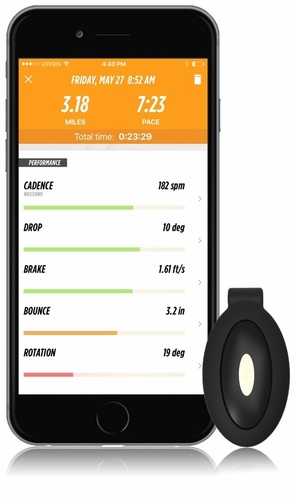
I’ve been using Lumo Run for a few months to help upgrade my running form and economy. It tracks each of these key components. Each is important to help you run like an elite regardless of your pace. I wish I had been able to utilize it during my competitive career because I am absolutely sure that with it, my IRONMAN marathon in Kona would have plummeted below 2:40:04, which still stands as the best marathon split at the World Championships in Hawaii!
 About the Author: Mark Allen was the first ever ITU Olympic Distance World Champion in 1989 in Avignon France, the 6-Time Hawaii IRONMAN World Champion, and the 10-Time Undefeated Champion of the Nice International Triathlon to name a few of his historic racing accomplishments. In 2012, he was voted “The Greatest Endurance Athlete of All Time” in a worldwide poll conducted by ESPN. Now he serves as founder and coach of MarkAllenCoaching.
About the Author: Mark Allen was the first ever ITU Olympic Distance World Champion in 1989 in Avignon France, the 6-Time Hawaii IRONMAN World Champion, and the 10-Time Undefeated Champion of the Nice International Triathlon to name a few of his historic racing accomplishments. In 2012, he was voted “The Greatest Endurance Athlete of All Time” in a worldwide poll conducted by ESPN. Now he serves as founder and coach of MarkAllenCoaching.
Save


